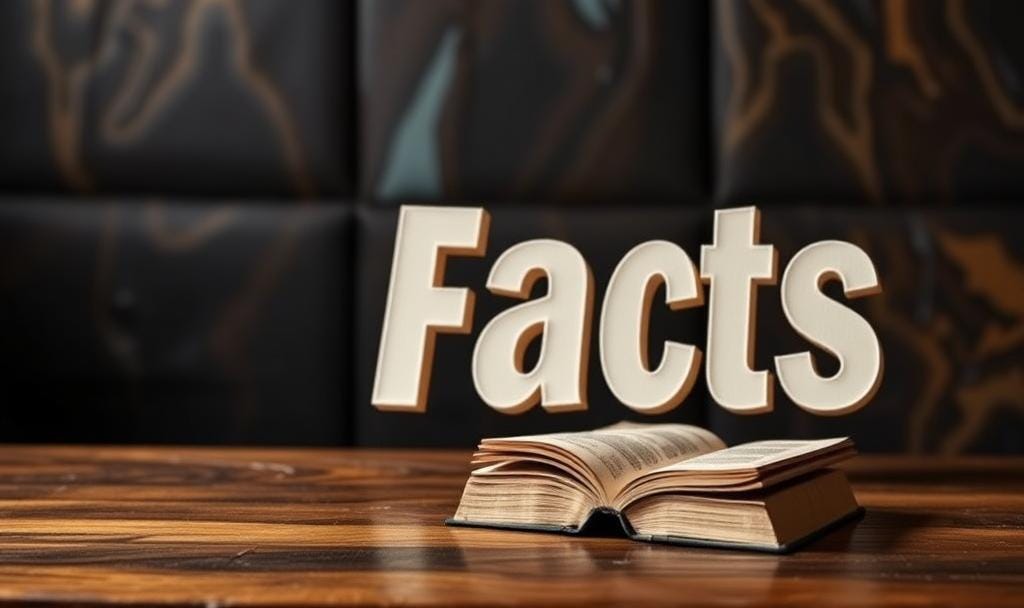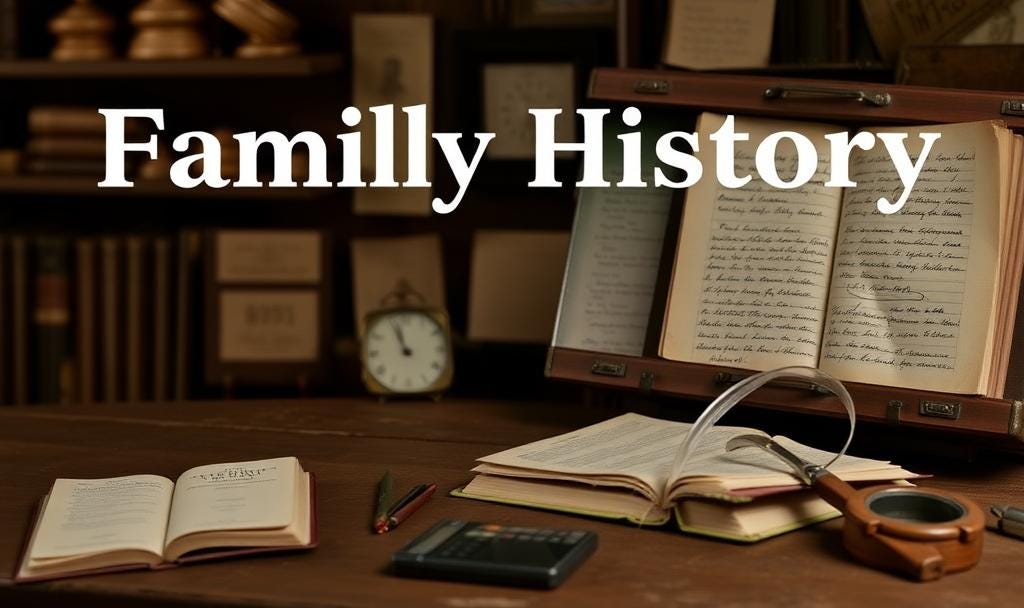🕵️♀️ How to Fact-Check Online Family Trees
Learn how to fact-check online family trees using primary sources, expert techniques, and real genealogical tools. Stop spreading errors and build a tree you can trust.
If you've ever spent time browsing family trees on websites like Ancestry, MyHeritage, or FamilySearch, you’ve probably seen it all — kings from the 1300s, 14 children born within three years, or relatives married to someone in two different centuries. 😳
While online family trees are an incredible starting point, they’re not always accurate. In fact, many contain copy-and-paste errors, outdated information, or undocumented guesses. That’s why learning to fact-check online trees is one of the most important skills in genealogy.
Let’s break it down.
🔍 Why Fact-Checking Matters
Mistakes compound quickly. One error can lead to dozens of incorrect ancestors.
DNA analysis depends on accuracy. False relationships can skew matches.
Your family story deserves the truth. Not just a convenient version of it.
🧰 Step-by-Step: How to Fact-Check Online Family Trees
1. Start With One Person
Choose one ancestor from an online tree you want to verify. Avoid going down the rabbit hole of 30 generations all at once. Focus on one name, one generation at a time.
2. Check for Sources
Look for attached records, such as:
Census data
Birth, marriage, or death records
Wills or probate records
Military or immigration documents
🚩 Red flag: No sources listed or vague ones like “Ancestry Family Tree” or “GEDCOM file.”
3. Verify Dates and Locations
Do the math:
Was the mother 9 years old when she gave birth?
Did the person marry someone born 50 years later?
Did they “die” in one state but appear in a census 10 years after?
Use timelines to spot inconsistencies.
4. Cross-Check With Primary Sources
Primary sources include:
Birth/death certificates
Original census images
Church and land records
Use repositories like:
FamilySearch.org (free)
Ancestry.com
Local and state archives
Newspapers.com
5. Search for Duplicates
Sometimes the same person appears in multiple trees under different spellings or variations. Compare details and see if you're looking at two people or just one with conflicting info.
6. Use Caution With “Hints”
Those leaf hints are suggestions, not confirmations. Always investigate before adding them to your tree.
7. Make Notes
Keep research notes, especially if you:
Rule out a record
Disagree with an online tree
Identify a common error repeated across multiple trees
Document why you believe something is or isn’t accurate.
🧠 Pro Tips from a Professional Genealogist
Just because 20 people copied it doesn’t make it true. Popular errors spread fast online.
Evaluate the source, not the person. Even experienced genealogists can make mistakes.
Be okay with gaps. It’s better to leave a blank than to guess wrong.
🧬 Fact-Checking Helps You Build a Tree You Can Trust
Your ancestors were real people — and their stories deserve accuracy, not assumptions. Fact-checking online trees takes time, but it’s worth it to ensure that your family history reflects truth, not just tradition.
So before you click “Add to Tree”… pause, verify, and dig deeper. You never know what you’ll uncover when you do!
💬 Have you found a wild error in an online tree? How did you fix it? I'd love to hear your genealogy detective stories — share in the comments below!
📌 Want more tips like this? Be sure to follow me on Instagram and subscribe to my newsletter for regular research tools, updates, and inspiration.
☀️ SUMMER SALE BLOWOUT! ☀️
🔎 Discover Your Roots for LESS — 80% OFF My Best-Selling Courses!
It’s time to turn up the research heat and dive into your family history like never before!
For a LIMITED TIME ONLY, I’m offering 80% OFF my two best-selling, most-loved genealogy programs — to help you uncover your ancestors and decode your DNA like a pro.
📚 What’s Included:
🧬 The DNA & Genetic Genealogy Academy
Regular Price: $479 | Now Only: $97
Learn how to understand your DNA results, identify genetic matches, and break through even the toughest brick walls.
✅ Master match analysis
✅ Learn clustering & triangulation
✅ Understand your ethnicity reports
✅ Real case studies + worksheets
✅ Self-paced and beginner-friendly!
📖 The Genealogy Academy
Regular Price: $479 | Now Only: $97
Perfect for beginners and intermediate researchers! Learn to trace your tree from the ground up with confidence.
✅ Research strategy & tools
✅ Document analysis & citation
✅ Organizing your findings
✅ Tips for U.S. & regional research
✅ Printable guides & bonus templates
🎉 Don't Miss Out!
This summer-exclusive sale won’t last forever. Whether you're just starting out or ready to go deeper — now's the time to grab these expert-led courses for just $97 each!
📆 Offer ends SOON
📍 Visit: The Genealogy Gypsy Store at https://payhip.com/thegenealogyinvestigator
📧 Questions? Contact me at MetaphysiKel@gmail.com
🔗 Click. Learn. Discover.
Your ancestors are waiting… are you ready to find them?












Many family trees had my 3x great-grandfather, Samuel Spence, with parents Ebenezer Spence and Margaret Merriam. Some even had Ebenezer and Margaret born and dying in England with generations further back, which was clearly wrong, since Sam had been born in Nova Scotia in 1814. Sam could have been born in Nova Scotia while his father stayed in England, however unlikely, but his mother had to have been in Nova Scotia in 1814. Not many people went back to the old country after emigrating.
Sam's death in 1874 was listed in the death register. In the Father column, it said Ebenezer &. In the Mother column, it said Margaret Merriam. Handwritten, in an original record, so it must be right.
I searched in all kinds of Nova Scotia records for an Ebenezer Spence and a Margaret Merriam and couldn't find any. However, the Merriam family was prominent in the area, and they had a father-son-grandson trio all named Ebenezer Merriam. Now, Ebenezer is an unusual name, and I probably wouldn't have noticed it if the name were John. But I began to think that when Sam's son gave the info for his father's death record, he mixed up his grandfathers. So I plugged in the possibility that Sam's parents were Mr. Unknown Spence and Margaret Merriam, and Margaret was the daughter of one of the Ebenezer Merriams.
But! The prominent Merriams were in all kinds of records, censuses, family Bibles, etc. Not only did none of the Ebenezers have a daughter named Margaret, there were no Margarets in the Merriam family at all! I thought Margaret was possibly a middle name or a nickname not listed in records.
Some time later, another genealogist researching in the same county happened to mention that the death registers were compiled by clerks. The original records were separate slips of paper that the registrars sent in quarterly. I immediately thought I could use the original slips to get some clue to Sam's actual parents.
Eureka! The clerk had made a mistake in the register! I don't blame him, because the registrar's handwriting was atrocious. The same week as my Sam died, a man of the same age died named James Merriam. It was James's parents who were Ebenezer and Margaret Merriam! The clerk had switched the men's parents.
So who were my Sam's parents? Well, they were assigned to the wrong man. Unfortunately, not much info there. No one knew Sam's father's name; under Father, it just says blacksmith. And here's why the mistake was probably made -- Sam's mother's first name was Mirriam.
How to change all the incorrect info on all the online trees? I emailed some people I know. I posted about it "Caution! False Spence Ahead!" on my blog, www.grandmasgrannysfamilyalbum.blogspot.com. I called the Nova Scotia Vital Statistics, but they said they can't do anything about the mistake because all they can do is show the records as they are.
Just a cautionary tale.....if you just copy trees, they are likely to be wrong.